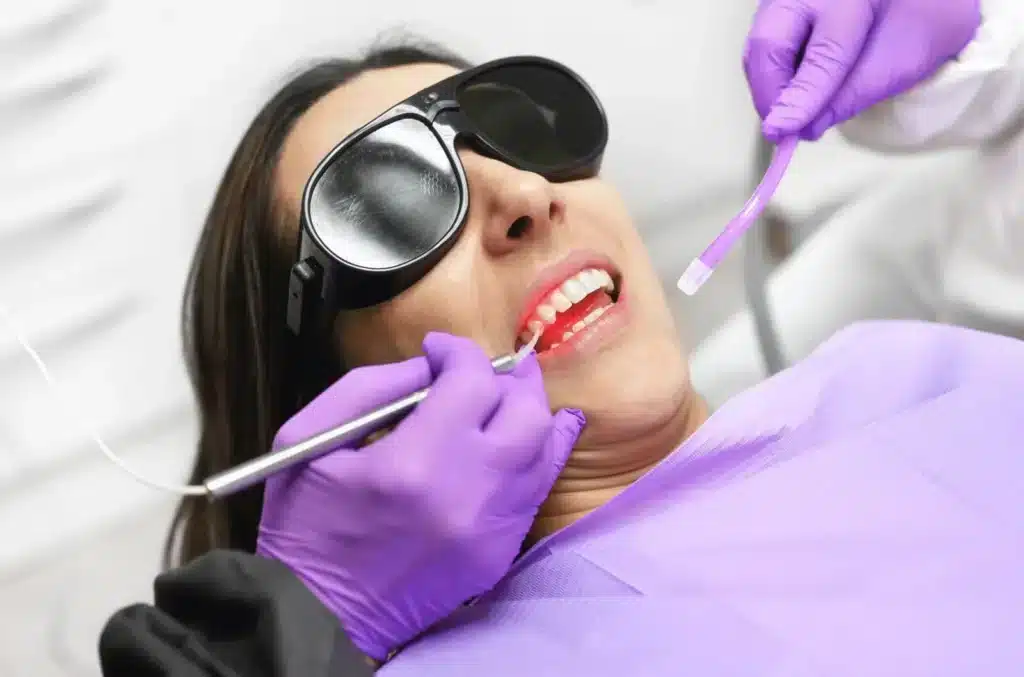Curious about the distinguishing features of laser dentistry dental compared to traditional treatments? Look no further! Discover all you need to know about the rapidly growing popularity of laser dentistry by scrolling down.
Use
The use of lasers in dentistry dates back to the 1900s, but it has recently gained significant popularity.
This innovative and minimally invasive technology finds various applications in dental procedures, including:
- Tissue removals
- Gum exposures,
- Treating cavities and sensitivity,
- Performing root canal procedures
- Wisdom tooth removal
- Laser teeth whitening,
- Managing gum and soft tissue infections.
With such diverse uses, dental lasers are revolutionizing the field of dentistry.
Procedure for Laser Dentistry
Dental laser treatments involve special rays with LASER. Here’s how these treatments are performed:
Step 1: If necessary, anesthesia is administered, and the area under treatment is prepared.
Step 2: The dental team sets up the laser beam, which serves as a cutting instrument, vaporizing device, or heat source based on the specific treatment needs.
Step 3: Once set up, the instrument emits focused, narrow beams that precisely alter the targeted tissue to achieve the intended effect.
The dentist has complete control over the area being treated and the duration of exposure.
Any blood is promptly wiped off during the procedure to maintain a clear view.
Step 4: The dentist provides post-treatment instructions for proper care afterward.
Step 5: To ensure optimal results, the dentist schedules timely follow-ups and advises on maintaining good oral hygiene.

Pros and Cons
| Pros | Cons |
| Minimized bleeding | Possible gum injury |
| Faster wound healing | Usage is limited for all teeth |
| Sutures may not be necessary | Can’t reach cavities between teeth |
| Most procedures can be performed without anesthesia | Unable to perform all dental procedures using Lasers |
| Less pain and anxiety | Less economical |
Types of Lasers
In dentistry, two lasers are utilized based on their specific applications.
- Hard Tissue Lasers
- Soft Tissue Lasers
Hard Tissue Lasers
These are designed to cut through intricate oral structures like bone and teeth. They are commonly used in tooth fillings, removals, and treating teeth sensitivity.
Soft Tissue Lasers
These lasers cut and penetrate through gums and oral membranes. Their primary applications include killing microorganisms, promoting gum and tongue re-growth, and reshaping procedures.
Is Laser Treatment Painful?
Laser dental treatments are typically painless and often do not necessitate local anesthesia. The reduced vibration and minimal discomfort associated with lasers make them a more comfortable and convenient option for patients when compared to traditional technologies.


